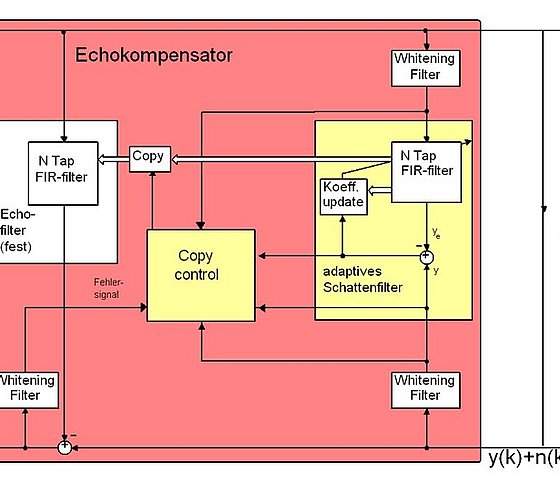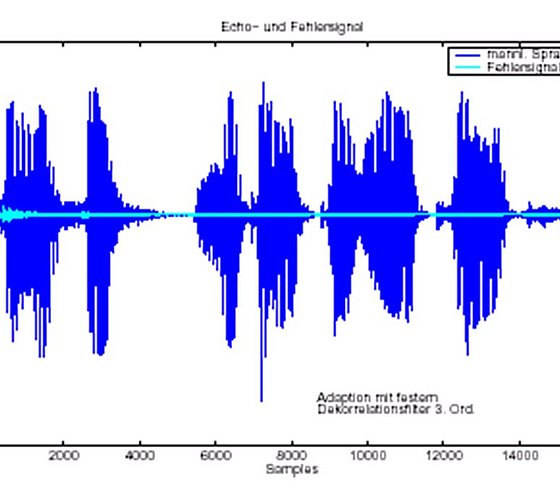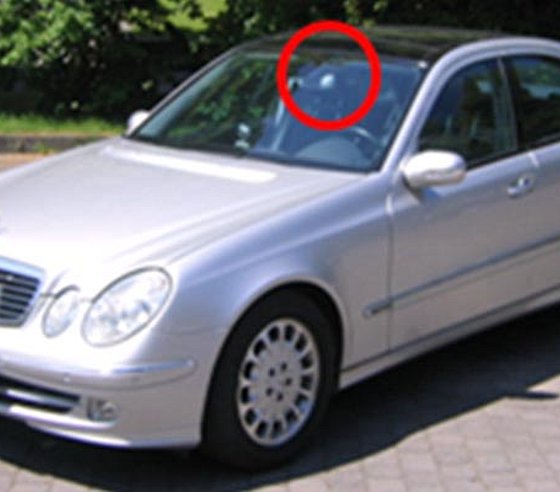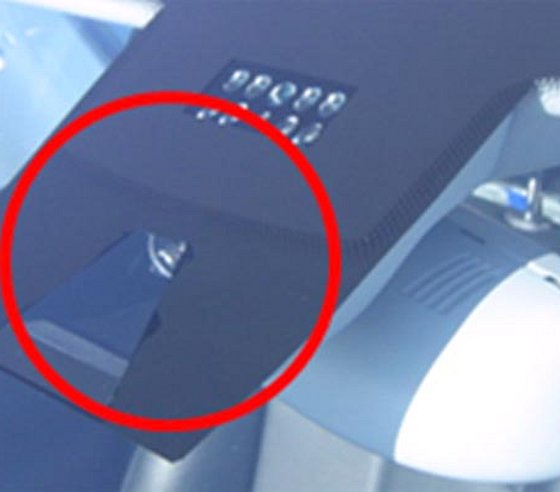Simulation and design of an acoustic echo canceller using a DSP board and optimization of an adaptive filter algorithm

Figure 1): Acoustic echo cancellation as block diagram

Figure 2): Echo canceller with whitening filter
Vehicles are increasingly being equipped with hands-free kits. However, feedback occurs via the acoustic path between loudspeaker and microphone, which can lead to disturbing echoes and unstable behavior. An elegant way to suppress these echoes is to use adaptive digital filters, as shown in the block diagram in Fig. 1.
Within the scope of the project, corresponding simulation models based on the MATLAB software tool were initially created and detailed investigations carried out. With the help of the simulation models, statements were to be made about the transient response, the tracking behavior and the required implementation effort.
In a second step, measurements were also carried out in real time with a hardware setup. A digital signal processor and suitable interfaces were used to implement a hands-free system with acoustic echo cancellation. The system was then used to carry out metrological investigations with regard to the echo attenuation that could be achieved, the maximum possible filter size and the stability properties.
In particular, the extent to which improvements can be achieved in terms of implementation effort and performance compared to the classical NLMS algorithm was investigated. One approach was the blockwise update of the filter coefficients, which led to a significant reduction of the computational effort.
The block diagram of the developed algorithm is shown in Figure 2. By additional pre-filtering of the signals with whitening filters (fixed and adaptive), the transient response of spectrally colored input signals could be significantly improved.

Figure 3: Simulation result with 3rd order Prewhitning Filter

Figure 4: Measured echo attenuation
In order not to distort the useful signal by the "whitening filter", the adaptive filter was implemented as a shadow filter, which is permanently updated. The filter coefficients were only passed on to the actual filter in the signal path if the echo attenuation could actually be improved. These measures resulted in a significant increase in overall performance.
Figure 3 shows the error signal determined with a simulation model for a male speech signal at the input. Figure 4 shows the measured echo attenuation curves determined with and without whitening.

Camera system for detecting moving objects

detailed view
- Lane Departure Warning (LDW)
- Headlight Control
- Car-to-Car Communication
Electromagnetic compatibility (EMC)
The increasing use of diverse radio systems in confined spaces within vehicles can, in addition to the advantages that the individual system is intended to offer, also lead to negative side effects due to interference if the problem of electromagnetic compatibility is not carefully considered already in the concept phase.
Many car drivers are familiar with the effect that a mobile phone can emit characteristic noise patterns via the loudspeakers when switched on, even though the processing of mobile radio signals by the car radio is not intended. Such electromagnetic incompatibilities caused by the interaction of high field strengths, antenna-like structures and non-linear circuit properties are harmless in the example mentioned, but must be avoided at all costs in the case of safety-relevant functions.
Directive 2004/108/EC of the European Parliament and of the Council of 15 December 2004 defines the term "electromagnetic compatibility" as “the ability of equipment to function satisfactorily in its electromagnetic environment without introducing intolerable electromagnetic disturbances to other equipment in that environment”.
Another aspect that can only be addressed by field-theoretical methods is the limitation of the exposure of vehicle occupants, where the exposure is defined by the specific absorption rates generated in the human body by the radio fields. An extensive research project of the Chair of Theoretical Electrical Engineering on the effects of various terminal devices operated close to the body on the user has shown that a typical single source, for example a W-LAN transmitter in an office or household environment, does not exhaust a significant percentage of the maximum permissible exposure values currently specified in relevant recommendations, standards and regulations. This situation can, however, change significantly in the electromagnetically almost closed interior of a vehicle, where the simultaneous use of many radio systems results in a corresponding multiple exposure of the occupants.
